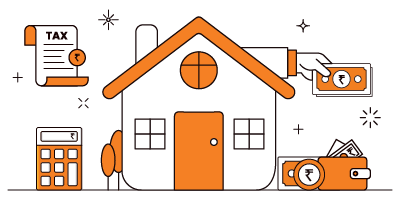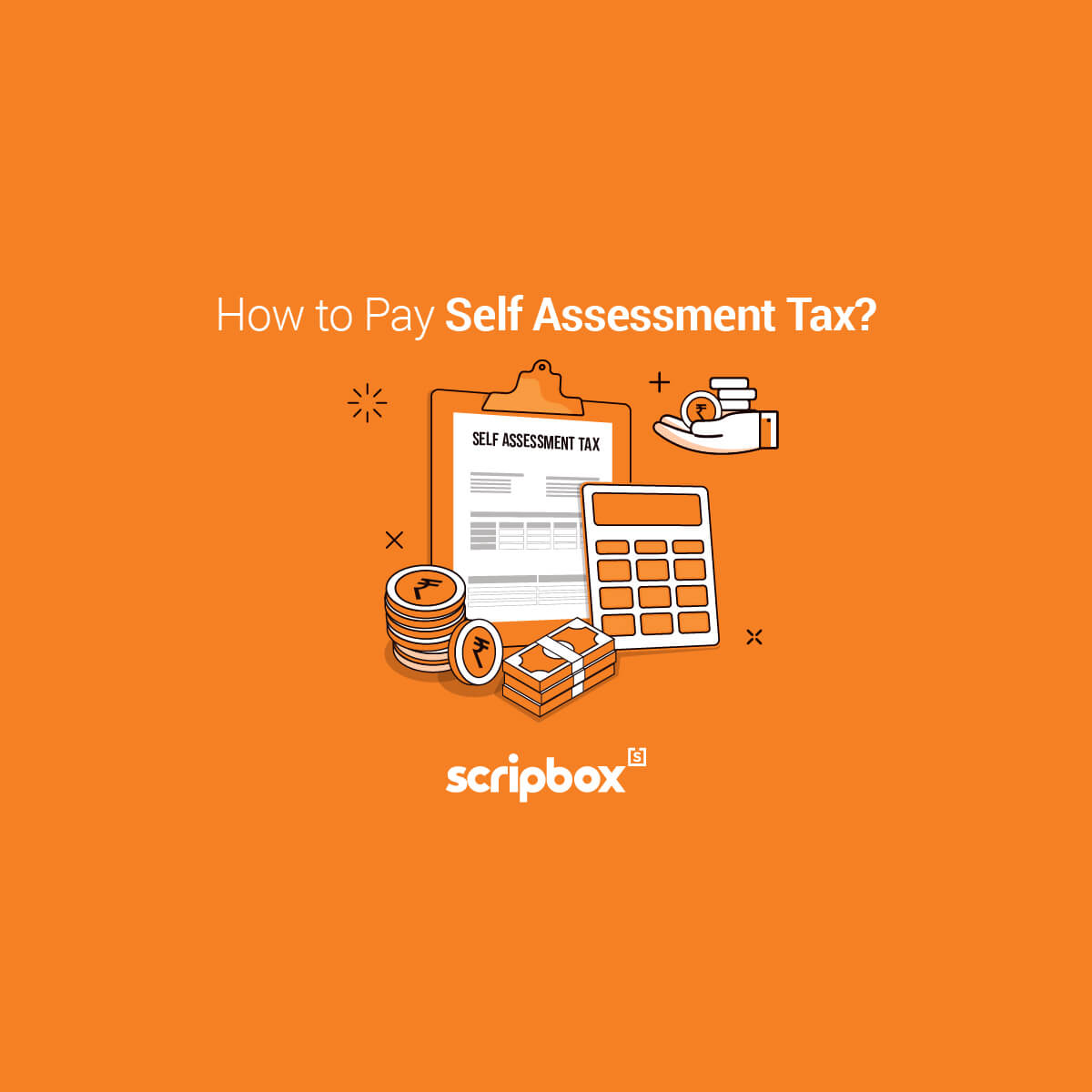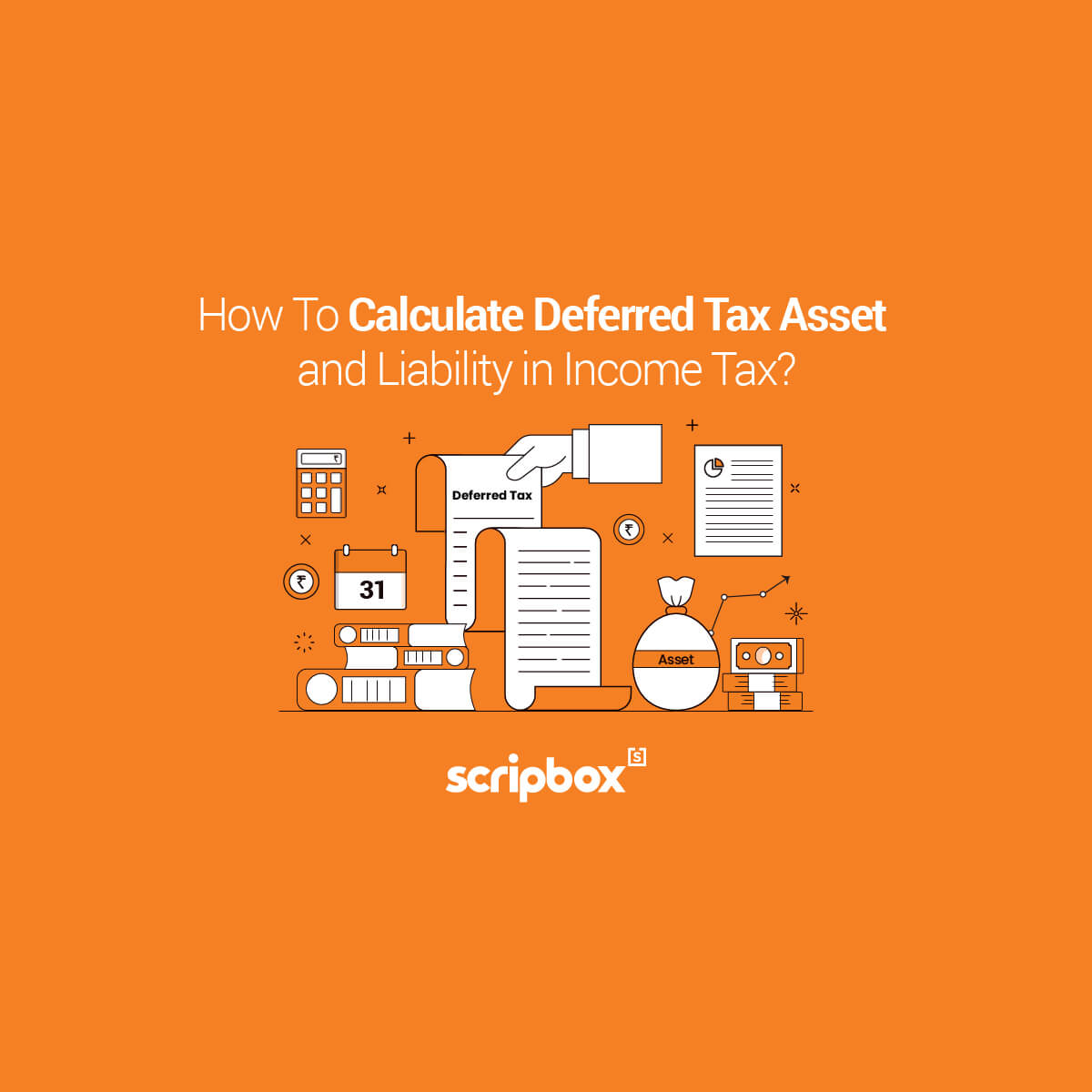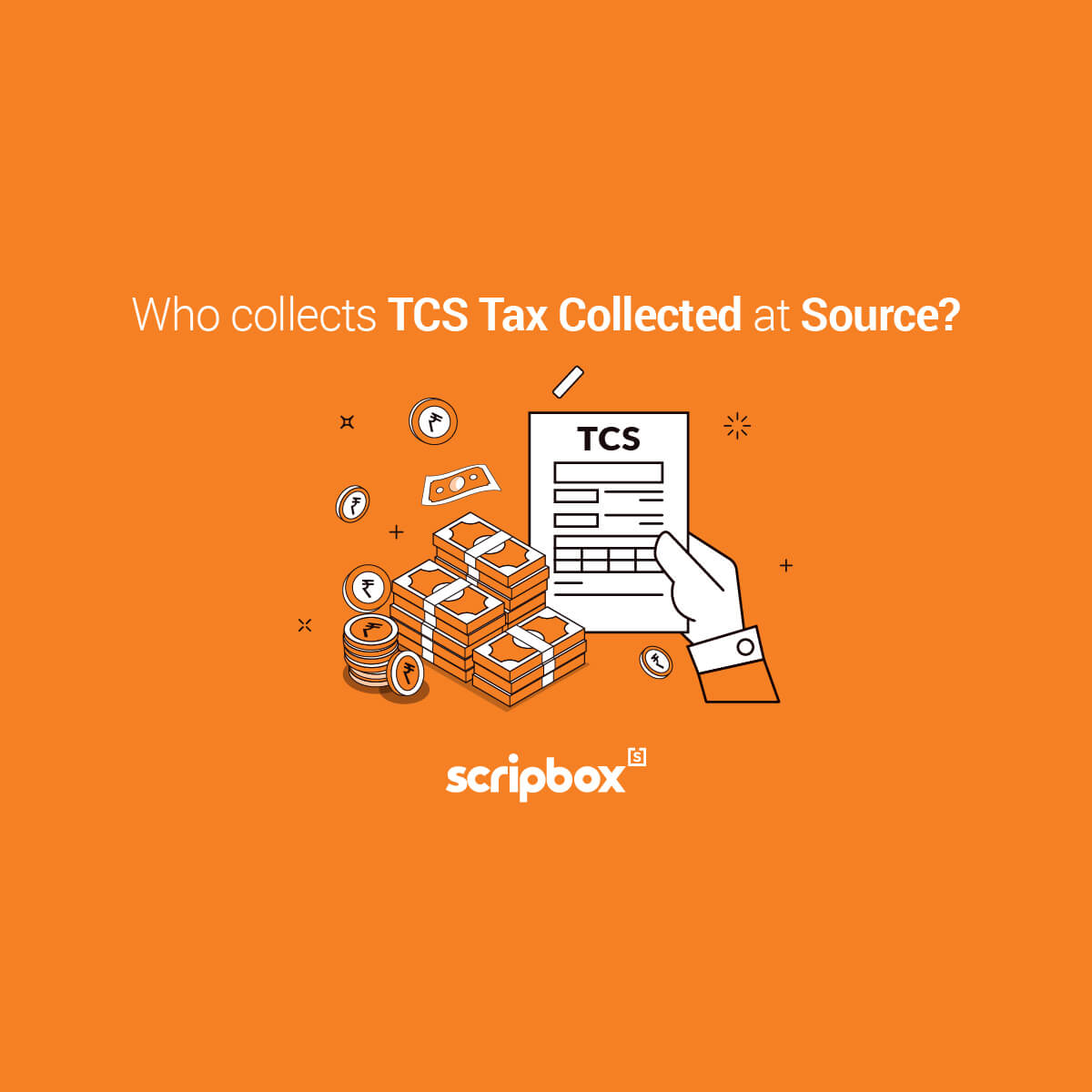What is Income from House Property Under Section 24?
House property for the purpose of income tax is any property whether land or building which an assessee owns during the financial year. The house property could be a house, building, flat, office, shop, or any property attached to these properties like a parking lot attached to a house. It is quite evident that the income tax department does not differentiate between a residential property and a commercial property. You own it for residential, rental, or commercial purposes; it is irrelevant. The income you generate and under which head of income that income is chargeable is all that matters.
On fulfilling the following conditions, the income will be chargeable under ‘Income from House Property’:
- The assessee is the owner of such property
- House property consists of any buildings or lands appurtenant thereto of which the assessee is the owner
- The house property is not used for the purpose of business or profession which is run by the assessee. In case the property is used for the purpose of business or profession then the treatment will be made under ‘Income from Business and Profession’.
Types of House Properties under ‘Income from House Property’
A house property simply owned by an assessee has different categories for the purpose of calculating income from house property. Such categories are as follows:
Self Occupied House Property
Self-occupied house property is the one that the assessee uses for his/ her own residence. Such a property can also be used by the assessee’s family i.e. spouse, children and parents. The treatment will be the same. A taxpayer can claim only 2 house properties as self-occupied for the financial year. The remaining house properties will be treated as ‘deemed to be let out’ house property. The gross annual value from self-occupied house property is considered NIL. You can, however, claim the expense such as interest on the loan while calculating the income from such house property.
Let Out House Property
The let-out house property is the one that the assessee owns and has let out the property in exchange for a rental income. Such rental income is taxable under ‘Income from House Property’ and you can claim all the expenses, interest on a loan in this case.
Deemed To be Let-Out House Property
The Income Tax Act, 1961 allows only 2 house property as self-occupied during the house property. If an assessee owns more than 2 self-occupied house properties then the other house properties will be treated as deemed to be let out. The tax treatment will be the same as if the property is actually let out.
For example- Mr. Arun owns 3 house properties and he resides in one house. Further, his parents use the second house as their own residence. The third house is not let out by Mr. Arun and his son resides there. Here, the third house will be treated as deemed to be let out irrespective of whether it is being used by his son.
How to calculate Income from House Property?
You can calculate the income from house property in the following manner:
| Particulars | Amount (Rs) |
| Gross Annual Value of The House Property | XXX |
| Less: Municipal Taxes | (XXX) |
| Net Annual Value | XXX |
| Less: Standard Deduction | (XXX) |
| Less: Interest on Borrowed Capital | (XXX) |
| Income from House Property | XXX |
The above is the manner to compute the income from house property. However, the applicability, limit, and treatment of each of these expenses, deductions, the gross annual value depends on the type of the house property.
Tax Treatment of All Types of House Properties
Self-Occupied and Let-Out House Properties
| Type of House Property | Gross Annual Value | Municipal Tax Deduction | Standard Deduction | Interest on Borrowed Capital |
| 2 Self-occupied house property | NIL | NIL | NA | Allowed up to Rs. 30,000 or Rs. 2,00,000, as the case may be. |
| House Property that could not be occupied by the owner. Due to employment or business at any other place | NIL | NIL | NA | Allowed up to Rs. 30,000 or Rs. 2,00,000, as the case may be. |
| Let Out House Property | As per Section 23(1) | Allowed, if actually paid | 30% of Net Annual Value (NAV = GAV – Municipal Taxes) | Total interest paid or payable is allowed as a deduction. The pre-construction interest is allowed in 5 equal installments |
Deemed-To-Be Let Out House Property and Let Out for Part of The Year
| Type of House Property | Tax on Income From House Property |
| Deemed To Be Let Out House Property | During a financial year, only 2 properties can be claimed as self-occupied, more than 2 house properties will be treated as deemed to be let out. This is irrespective of the property being let out or occupied. The income will be calculated as if the property is let out |
| Self-occupied Property let out for part of the year. | The self-occupied property will be treated as let out for the entire year. Hence, no relief for the period for which the self-occupied property was not let out but actually occupied by the owner. For example- Mr. Arun owns a self-occupied property. He has occupied for 5 months and let out for the rest of the year. For the entire year the property will be treated as a let out property |
| One part of the house is let out and the other part self-occupied | Both the parts of the house will be treated as separate house properties and tax will be applicable separately. |
How to calculate annual value?
You can calculate the gross annual value with the help of the following explanation:
| Scenario | Annual value of Any Property |
| Expected Value | The sum for which the property might reasonably be expected to let from year to year. Expected rent will be the municipal valuation or fair rent of the property whichever is higher. Further, the fair rent of the property cannot exceed the maximum standard rent |
| The house property or a part of it is let-outThe actual rent received is more than the expected value | The actual rent received or receivable by the owner against such let out. |
| The house property or a part of it is let-outBut it was vacant for whole or part of the yearDue to such vacancy, the actual rent received or receivable is less than the expected value | The actual rent received or receivable by the owner against such let out. |
Points to remember:
- The actual rent received or receivable by the owner shall not include the amount of rent that the owner cannot realize.
- A property consisting of any building or land appurtenant thereto can be held as a stock-in-trade and not let out during the whole or any part of the previous year. In such a case, the annual value of such property or part of the property, for the next 2 years will be nil. The next 2 years will start from the end of the financial year in which the taxpayer receives a certificate of completion of construction of the property from the competent authority
Deduction Under House property
While calculating the income from house property the income tax act, 1961 provides the following deductions from the gross annual value:
Municipal Tax
The local municipality authority levies municipal taxes on house properties. You can claim such municipal taxes including any service tax as a deduction from the gross annual value. Further, you need to fulfill the following conditions to claim the deduction:
- The municipal tax is borne by the owner of the house property
- Such owner has actually paid the municipal tax during the previous year
Standard Deduction
The taxpayer can claim a standard deduction of 30% of the gross annual value of the house property. However, you can claim standard deduction only if the house property is let out during the financial year.
Deduction for Interest on Borrowed Capital
Section 24 of the Income Tax Act, 1961 provides for deduction against interest on the loan. However, the following conditions apply for the deduction against interest on a home loan:
| Type of House Property | Deduction of Interest on Home Loan |
| Let Out House Property | The actual amount of interest on a home loan. The loan must be taken for purpose of acquisition, construction, repairing, re-construction |
| Self-Occupied House Property (Loan is taken on or after 01-04-1999) | The deduction of up to Rs 2 lakh is available for the financial year. The loan must be taken for the purpose of acquisition, construction, repairing, re-construction on or after 01-04-1999. The acquisition or construction of house property must be completed within 5 years from the end of the financial year in which capital was borrowed.You must submit an interest certificate. The financial institution will provide the interest certificate mentioning the total interest paid during the previous year along with the loan amount. |
| Self-Occupied House Property (Loan is taken before 01-04-1999) | Deduction up to Rs 30,000 on a home loan that is taken for the purpose of reconstruction, repairs, or renewals. |
Points to remember while claiming a deduction for home loan interest
- You must acquire, construct, repair, renew or reconstruct the property using the loan amount only.
- The deduction is available only against the interest amount. Other expenses on loan such as loan processing fee, brokerage, or commission do not qualify for a deduction.
- If the loan is taken on or after 01-04-1999 for the purpose of reconstruction, repairs, or renewals of a house property then Rs 30000 is available as a deduction
- In case the capital is borrowed on or after 01-04-1999 but construction of house property is not completed within five years then only Rs 30000 is available as a deduction
- From the assessment year 2020-21, an assessee can declare 2 houses as self-occupied and claim interest on a home loan as a deduction. However, the total limit of Rs 2,00,000 and Rs 30,000, as the case may be is still applicable
Deduction for Pre-Construction Interest Amount
Till now we have come across interest on a loan for a post-construction or already bought house property. Section 24 of the Income Tax Act, 1961 also provides a deduction against pre-construction interest on home loans. The following conditions apply:
- The deduction is available in 5 equal installments starting from the financial in which the house property is constructed, purchased, or possessed.
- You can claim a total deduction of up to Rs 2,00,000 in a financial year.
- The deduction is not available if the loan is taken for the purpose of repair or reconstruction of the house property.
Recommended Read: Income Tax Calculator
Interest on Loan Under Section 80EE of Income Tax Act, 1961
A taxpayer can claim a deduction against interest on a home loan under section 80EE of the Income Tax Act, 1961. However, the following conditions apply:
- You can claim a deduction interest amount up to Rs 50,000 during the financial year.
- If you claim the deduction under section 80EE you cannot claim the deduction against such interest under any other section
- You must not own any other house property at the time of sanction of the home loan against this house property
- House property is used for residential purpose only
- The loan is sanctioned during the period starting from 1st April 2016 till 31st March 2017
- The value of the house property is not more than Rs 50 lakh. Additionally, the loan sanction amount is not more than Rs 35 lakh.
Calculation of Income from House Property
Now we are aware of the concept of types of house properties and deductions available to each such type of house property. Now let us understand the calculation of income from a house property with the help of an example:
Mr. Arun owns 4 house properties and the following are the details of each house property:
| Particulars | House1 (Rs) | House2 (Rs) | House3 (Rs) | House4 (Rs) |
| Type | Self-Occupied | Vacant | Let-Out | Vacant |
| Actual Rent Received Per Month | 32,000 | |||
| Expected Rent Per Month | 10,000 | 17,000 | 19,000 | |
| Municipal Taxes Paid | 10,000 | 8,000 | 30,000 | 23,000 |
| Home Loan Interest Per Month | 20,500 | 0 | 20,000 | 9,000 |
| Total Pre-Construction Interest | 5,00,000 |
Income from House Property
| Particulars | House1 (Rs) | House2 (Rs) | House3 (Rs) | House4 (Rs) |
| Type of House Property | Self-Occupied | Self-Occupied | Let-Out | Deemed Let Out |
| Gross Annual Value | – | – | 3,84,000 | 2,28,000 |
| Less: Municipal Tax | – | – | 30,000 | 23,000 |
| Net Annual Value | – | – | 3,54,000 | 2,05,000 |
| Less Standard Deduction @ 30% of NAV | – | – | 1,06,200 | 61,500 |
| Less: Interest on Home Loan | 2,00,000 (20,500*12) | – | 2,40,000 (20,000*12) | 1,08,000 (9,000*12) |
| Less: Pre-Construction Interest | 1,00,000 (5,00,000 * 1/5) | |||
| Income/ (Loss) From House Property | (2,00,000) | Nil | 7,800 | (64,500) |
Explanations:
- Since you can assume 2 houses as self-occupied it is acceptable to assume the house2 as self-occupied.
- The gross annual value will be the actual rent or expected rent.
- For house1 the actual interest amount is Rs 2,46,000. However, for self-occupied house property, you can claim only Rs 2,00,000 during a financial year.
Deduction for Unrealized Rent
When an assessee rents out his/ her house property to a tenant many a time, the owner fails to receive the rent in full. This may be due to multiple reasons like insufficient funds with the tenant and so on. The Income Tax Department understands such situations and recognizes the burden of tax due to such unrealized rent. Hence, it provides every assessee a tax deduction against such default in rent. You can deduct the unrealized rent from the actual rent received or receivable during the financial year.
However, you must satisfy the following conditions:
- The tenancy is bonafide
- The house property is vacated by such defaulting tenant or the owner has taken appropriate action to ensure such vacancy
- Such defaulting tenant does not occupy any other house property belong to the assessee
- The assessee initiates a legal proceeding against the defaulting tenant to ensure recovery of the rent. He/ she can also instead satisfy the assessing officer with reasonable cause that a legal proceeding will not be fruitful.
Treatment of Arrears of Rent and Unrealised Rent Received Subsequently
There might be cases wherein you have not received the rent in the past and received in the current financial year. Such recovery of arrears of rent or unrealized rent is taxable under the head ‘Income from House Property’. The amount of rent is taxable in the financial years in which you have received it. Moreover, it is irrelevant whether you are still the owner of the house property in that financial year. No doubt the rent will be taxable under income from house property but you will also receive a 30% deduction from such rental amount.
Treatment of Co-owned House Property
A house property can have more than 1 owner. Such a property is under the co-ownership of its owners. For the purpose of computation on income from house property, the following rules apply in the case of co-ownership of a house property.
- If the share in the house property is ascertainable and definite then the income will be chargeable in the hands of each owner separately.
- The income will be chargeable as a percentage or ratio of the share of ownership. For example, if the ownership is for 70% and 30% among 2 owners, then the income sharing will be 70% and 30% or 7:3 ratio.
- The annual value will also be as per the ownership sharing ratio
- All the benefits associated with a self-occupied property like interest, taxes, the standard deduction will be available to each owner. The benefit will be available as per the ownership sharing ratio.
- In case the share in the house property is NOT ascertainable or definite then the income will be chargeable in the hands of an Association of Persons.
Deemed Owner of House Property Under Income Tax Act, 1961
Usually, the owner of the house property is liable to pay tax on income. However, in a few cases, the legal owner is not responsible for paying taxes on income. The following are the cases wherein the following deemed owners are responsible for paying taxes:
- The holder of an impartible estate will be considered as an individual and sole owner of all the properties in the estate
- An individual who transfers any house property to his/ her spouse, minor child, such individual will be liable for taxes. Here the transfer does not involve payment of any consideration, is not in connection with an agreement to live apart from the spouse. Further, the minor child is not a married daughter.
- A member of a co-operative society, company, or other association of persons to whom a building or part thereof is allotted or leased under a house building scheme. This scheme is introduced by such co-operative societies, companies, or other associations of persons. Here the member will be liable to pay taxes.
- Under section 53A of the Transfer of Property Act, 1882 (4 of 1882), due to a part performance of a contract a person may take or retain possession of any building or part thereof. Such a person needs to pay taxes on income from such house property
- A person who acquires any rights in or with respect to any building or part thereof will be liable for tax in income. The acquisition of such a building is by virtue of any such transaction as is referred to in clause (f) of section 269UA.
Set Off of Loss From House Property
If an assessee incurs a loss from house property then he can set off such loss against any other income up to Rs. 2 Lakh in any assessment year. If the loss couldn’t be set off completely during the assessment year then you can carry forward such loss. You can carry forward such loss for 8 subsequent years.
Related Articles
- What is Income from House Property Under Section 24?
- Types of House Properties under ‘Income from House Property’
- How to calculate Income from House Property?
- Tax Treatment of All Types of House Properties
- How to calculate annual value?
- Deduction Under House property
- Interest on Loan Under Section 80EE of Income Tax Act, 1961
- Calculation of Income from House Property
- Deduction for Unrealized Rent
- Treatment of Arrears of Rent and Unrealised Rent Received Subsequently
- Treatment of Co-owned House Property
- Deemed Owner of House Property Under Income Tax Act, 1961
- Set Off of Loss From House Property























Show comments